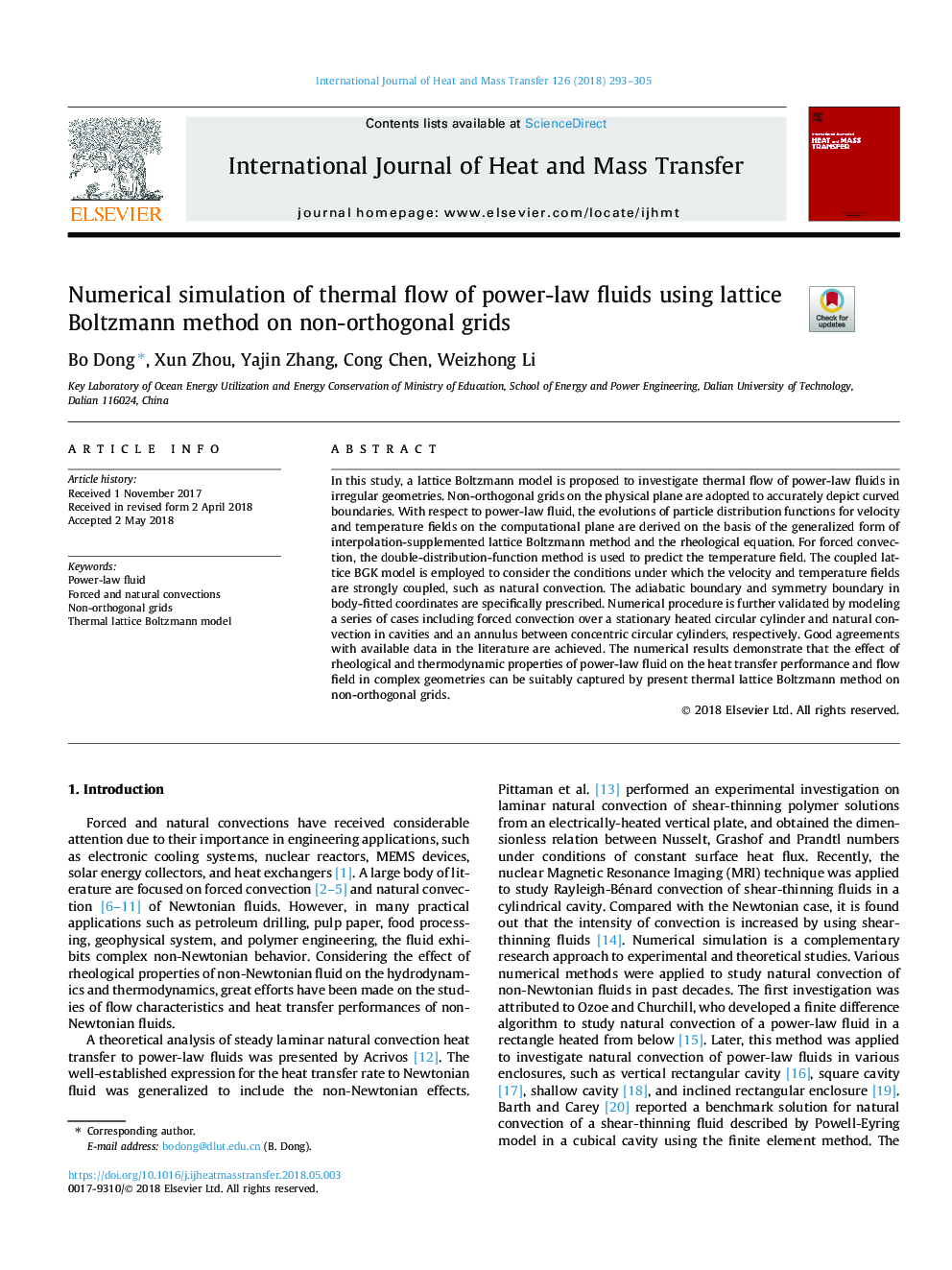| Article ID | Journal | Published Year | Pages | File Type |
|---|---|---|---|---|
| 7053969 | International Journal of Heat and Mass Transfer | 2018 | 13 Pages |
Abstract
In this study, a lattice Boltzmann model is proposed to investigate thermal flow of power-law fluids in irregular geometries. Non-orthogonal grids on the physical plane are adopted to accurately depict curved boundaries. With respect to power-law fluid, the evolutions of particle distribution functions for velocity and temperature fields on the computational plane are derived on the basis of the generalized form of interpolation-supplemented lattice Boltzmann method and the rheological equation. For forced convection, the double-distribution-function method is used to predict the temperature field. The coupled lattice BGK model is employed to consider the conditions under which the velocity and temperature fields are strongly coupled, such as natural convection. The adiabatic boundary and symmetry boundary in body-fitted coordinates are specifically prescribed. Numerical procedure is further validated by modeling a series of cases including forced convection over a stationary heated circular cylinder and natural convection in cavities and an annulus between concentric circular cylinders, respectively. Good agreements with available data in the literature are achieved. The numerical results demonstrate that the effect of rheological and thermodynamic properties of power-law fluid on the heat transfer performance and flow field in complex geometries can be suitably captured by present thermal lattice Boltzmann method on non-orthogonal grids.
Related Topics
Physical Sciences and Engineering
Chemical Engineering
Fluid Flow and Transfer Processes
Authors
Bo Dong, Xun Zhou, Yajin Zhang, Cong Chen, Weizhong Li,
